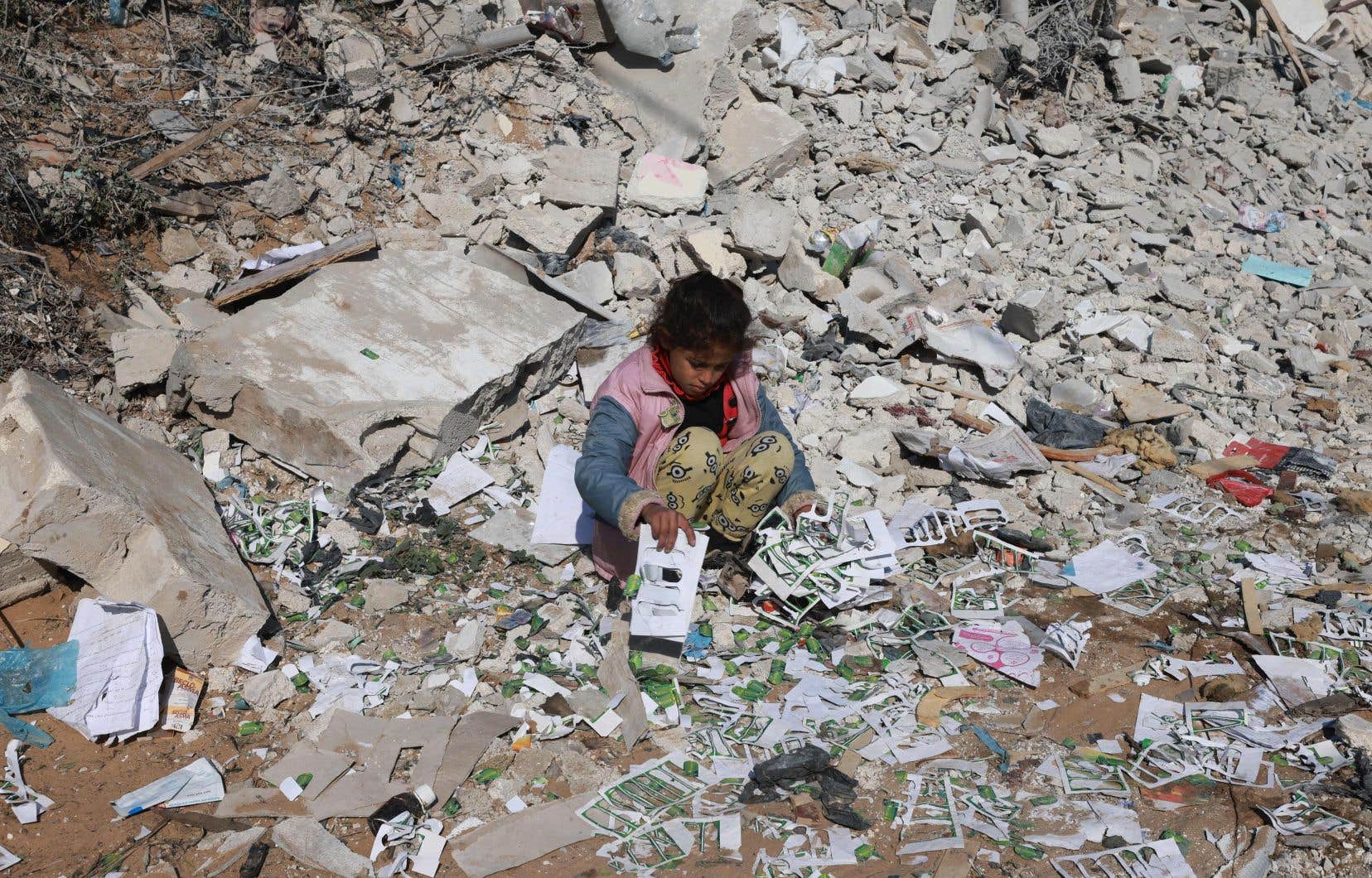The Israeli army shelled the south of the Gaza Strip on Tuesday, the day after Israel announced an imminent end to the “intensive” phase of fighting against the Palestinian Islamist movement Hamas, 102 days after the start of the war which exacerbates regional tensions.
In the morning, explosions and artillery fire rang out in the south of the Gaza Strip, noted an AFP journalist. During the night, the Israeli army bombarded the Khan Younes sector, the epicenter of its operations for several weeks. Its troops also targeted around a hundred rocket launch facilities in Beit Lahia in the north, killing “dozens of terrorists”, she said on Tuesday.
Rockets were fired in the morning from Gaza towards southern Israel without causing any injuries, Israeli authorities said. They were mostly intercepted by the Iron Dome anti-missile system above Ofakim, according to AFPTV images.
The war was sparked by an unprecedented Hamas attack on October 7 in southern Israel, which resulted in the deaths of around 1,140 people on the Israeli side, the majority civilians killed the same day, according to a count by the AFP produced from official Israeli data.
Some 250 people were taken hostage, and 132 are still in Gaza, at least 25 of whom are believed to have been killed, according to Israeli authorities. Around a hundred were released during a truce at the end of November.
In retaliation, Israel vowed to annihilate Hamas, in power in Gaza since 2007.
In this territory, 24,285 people were killed by Israeli bombings and military operations, the vast majority of them women, children and adolescents, or 1% of the population, according to the latest report, Tuesday, from the Hamas Ministry of Health, which lists also 61,154 injured.
The Israeli army reported the death of two soldiers, bringing to 190 the number of soldiers killed since its entry into the Gaza Strip on October 27.
At the start of the war, “we clearly said that the intensive stage of operations would last approximately three months,” Israeli Defense Minister Yoav Gallant said Monday evening.
“In northern Gaza, this phase is coming to an end. In the south,” where hundreds of thousands of Gazans have flocked at Israel’s request to flee the fighting in the north, “we will succeed and it will end soon,” Mr. Gallant added.
The Israeli army announced the withdrawal from Gaza on Monday of one of its four divisions engaged since October 27. At the same time, the Israeli government insists that the war will be long, and on Monday approved a budget for 2024 increased by $15 billion in spending to cover its cost.
“Suffering and humiliation”
Hamas, classified as a terrorist organization by Israel, the United States and the European Union, reported Monday the death of two Israeli hostages, broadcasting a video where we see a young woman, also hostage and visibly under pressure, announce deaths.
The armed wing of Hamas blamed their deaths on “Zionist” bombings, with the Israeli army rejecting these “lies”.
UN Secretary General Antonio Guterres, for his part, launched a new call for an “immediate humanitarian ceasefire”. “Nothing can justify the collective punishment inflicted on the Palestinian people,” he also pointed out.
In the Gaza Strip, where 1.9 million inhabitants have been displaced according to the UN, the population lacks everything in the cold which has fallen on the region.
UNICEF, the World Food Program and the World Health Organization have warned of a “risk of famine” and “epidemics of deadly diseases”.
Hamas’s Palestinian Health Ministry called on “international institutions to urgently provide medicines for chronic patients”, of whom it estimates 350,000 are deprived of care.
“Death would be preferable to this life” made “of suffering and humiliation,” laments thirty-year-old Abdul Karim Muhammad, refugee in Rafah near the Egyptian border with his three children. “We want to return home to the north,” he says, even though he knows his house there was destroyed.
Iranian strikes in Iraq
The war is exacerbating regional tensions between Israel and its allies, primarily the United States, and the “axis of resistance” established by Iran, which brings together armed movements such as Palestinian Hamas, the Lebanese Islamist movement Hezbollah and Yemeni Houthi rebels.
The Iranian Revolutionary Guards, the ideological army of the Islamic Republic of Iran, announced Tuesday that they had fired ballistic missiles in Syria and especially near Erbil, in Iraqi Kurdistan. According to the official Iranian news agency IRNA, they destroyed a “spy” center attributed to Israel, the existence of which a senior Iraqi official denied, denouncing “false allegations”.
The Iraqi government, an ally of Iran but also a partner of the United States, condemned an “aggression” of its sovereignty and recalled its ambassador to Tehran “for consultations”.
Off the coast of Yemen, a Greek bulk carrier was hit by a missile, the private maritime risks company Ambrey announced on Tuesday. An American cargo ship was hit on Monday in the Gulf of Aden by a Houthi missile. Late last week, the United States and the United Kingdom bombed Houthi positions in Yemen to try to stop their attacks in the Red Sea, which they say they are carrying out in solidarity with the Palestinians in Gaza.
On the Israeli-Lebanese border, where exchanges of fire between Hezbollah and Israeli forces are daily, the Israeli army announced new air raids overnight against Hezbollah “positions”.
